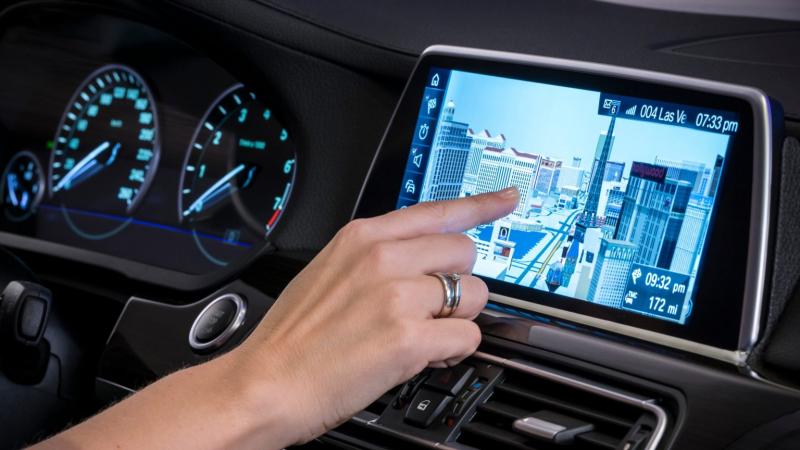Introduction
In-vehicle infotainment systems have revolutionized the way drivers and passengers interact with their vehicles. These advanced systems allow for a more personalized and convenient in-car experience through connectivity, multimedia, and advanced driver assistance features. With constant innovation in this space, cars are becoming mobility hubs that are transforming how we interact with technology on the go.
Evolution of In-vehicle Infotainment
Early car stereo systems of the 1980s and 90s provided basic AM/FM radio and cassette or CD player functionality. However, over the past two decades, in-vehicle infotainment systems have grown exponentially in capabilities. Touchscreen displays started emerging in the mid-2000s allowing for more intuitive control of audio, climate, and navigation features. By the 2010s, the rise of smartphone connectivity enabled integration of apps and connected services into car dashboards. Now, high-end infotainment platforms deliver multimedia entertainment, advanced connectivity, and driver assistance through large displays powered by the latest computing and connectivity technologies.
Connectivity at the Forefront
Apple CarPlay and Android Auto have standardized smartphone integration, replicating familiar phone interfaces onto In-Vehicle Infotainment display screens. This allows hands-free access to messaging, navigation, music apps, and more through voice commands or steering wheel controls. Additionally, built-in 4G LTE connectivity enables advanced embedded services like real-time traffic updates, remote vehicle monitoring/command features, and faster over-the-air updates. Major automakers are also launching their own app ecosystems and connected services like My Honda Apps, Ford Sync, Mercedes me, and more. The rise of Vehicle-to-Everything (V2X) communication will enable new uses cases in the future around remote operation, transportation as a service, and autonomous driving.
Entertainment and Comfort Features
Today's infotainment units deliver a full-fledged entertainment hub experience on the go. Passengers can stream multimedia content from various sources through Bluetooth, WiFi, or integrated apps. Some high-end options even include support for 4K/Ultra HD playback. Audio quality has greatly improved with upgrades like built-in subwoofers, amplifier options with higher wattage, and premium sound systems from brands like Bose, JBL, and Harman Kardon. Online music services like Spotify, Amazon Music, and more can now be natively accessed through touchscreen interfaces. Additional comfort features include integration with cabin air filtration systems, ambient lighting mood themes, and comfort/massage seats controlled from infotainment menus.
Advanced Driving Assistance Systems (ADAS)
Today’s ADAS technologies are bringing us closer to full autonomous driving capabilities through driver assistance features integrated into vehicle infotainment setups. Advanced cruise control maintains distance and speed automatically in traffic flows. Active lane control keeps vehicles centered through their lanes. Surround view cameras provide top-down 360 degree perspectives for parking and low-speed maneuvering. Automatic emergency braking intervenes to avoid collisions and some vehicles can even steer to safety autonomously during emergencies. Over-the-air updates will continue delivering new ADAS features to enhance safety. As 5G cellular networks are built out, advanced real-time vehicle-to-infrastructure abilities may debut.
Future Directions
As automakers shift towards electric and software-defined vehicles, infotainment systems will play an even bigger role as the primary user interface. Display technologies are advancing towardsinstrument-panel wide interactive screens with 8K+ ultra-high resolution. Advances in AR/VR will bring new augmented interfaces to assist drivers. AI-powered digital assistants will answer queries, adjust settings, and assist with in-cabin tasks. Advanced security and privacy measures will be needed to manage connectivity-enabled new features. 5G cellular will enable higher bandwidth applications around augmented driving, augmented reality interfaces, and remote vehicle operation. As autonomous vehicles debut, infotainment will transform occupant experiences emphasizing comfort, productivity and entertainment. Ultimately, vehicles will evolve into self-driving mobility platforms advancing how we interact with technology on the go.
In-vehicle infotainment systems have become the prominent interface connecting drivers and passengers to the digital world while in motion. Rapid innovation is transforming the in-car experience centered around connectivity, advanced driver assistance, and multimedia entertainment. As automotive and mobile technologies converge, infotainment will occupy the forefront of further augmented mobility experiences. The road ahead is promising as automakers continue leveraging the latest advancements to deliver even more engaging and personalized in-cabin technologies shaping the future of transportation.
Get more insights on In-Vehicle Infotainment
